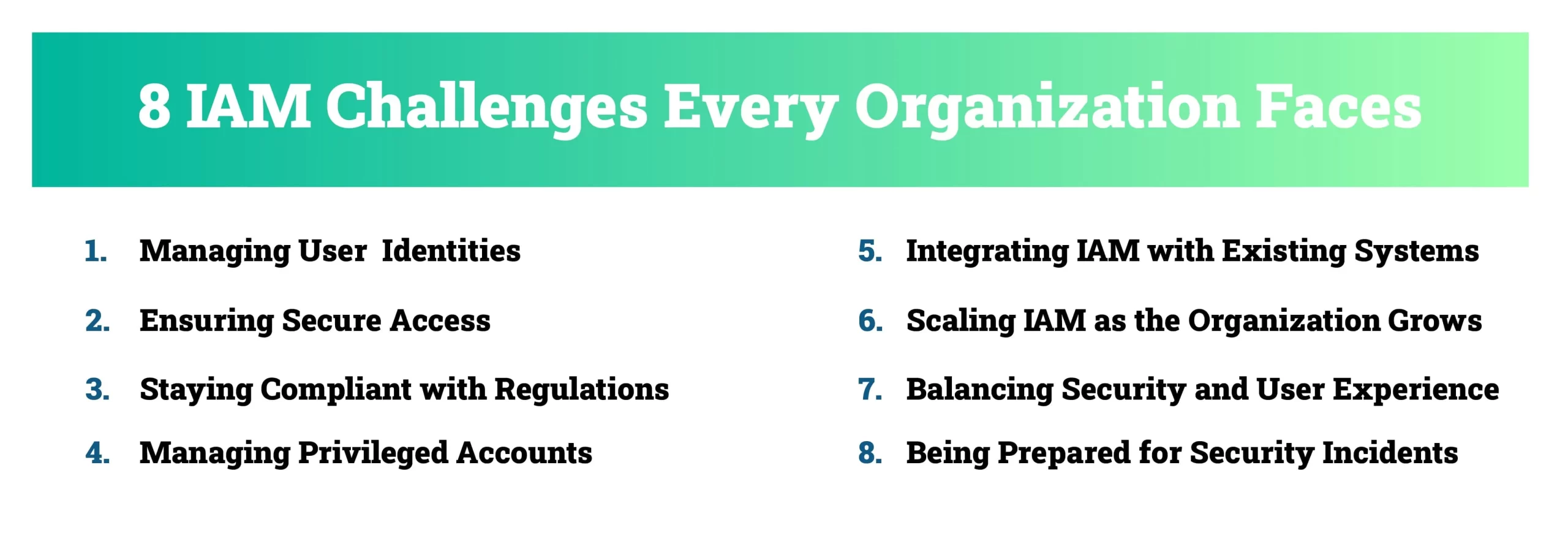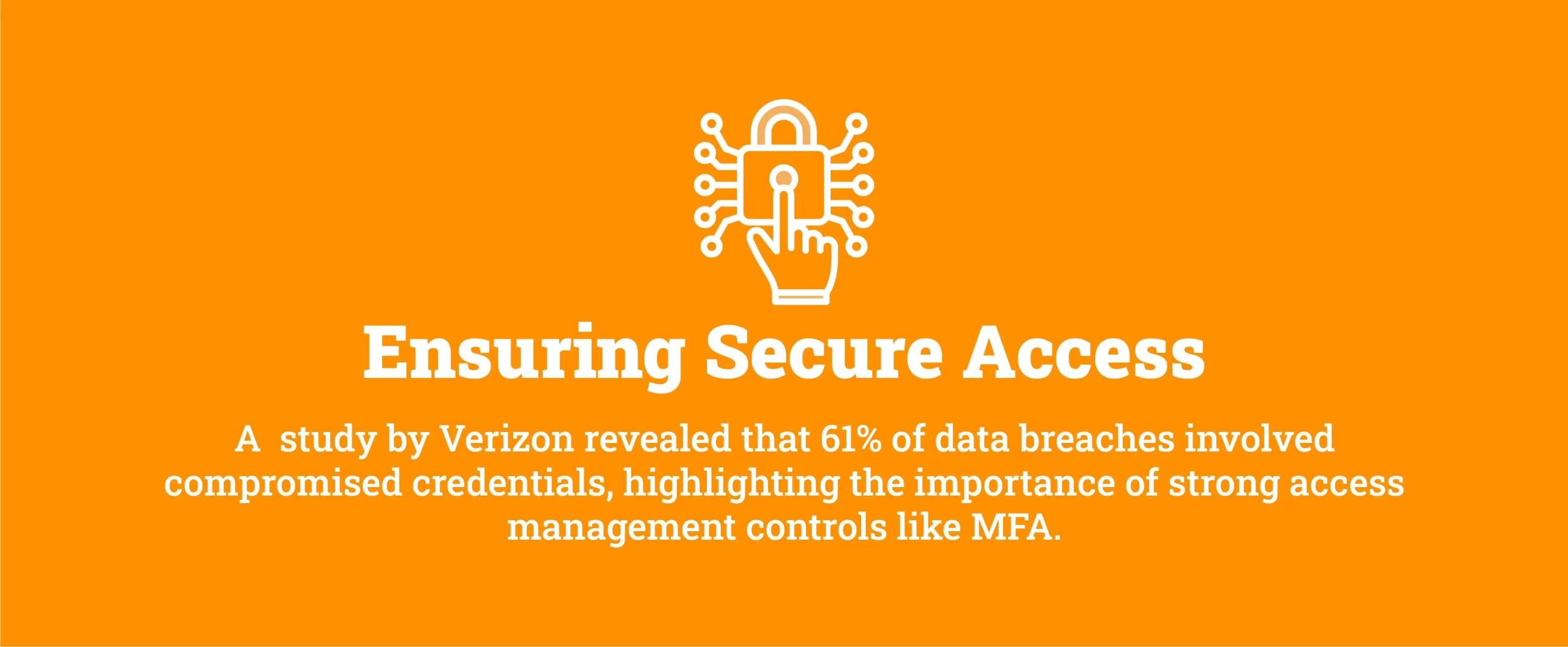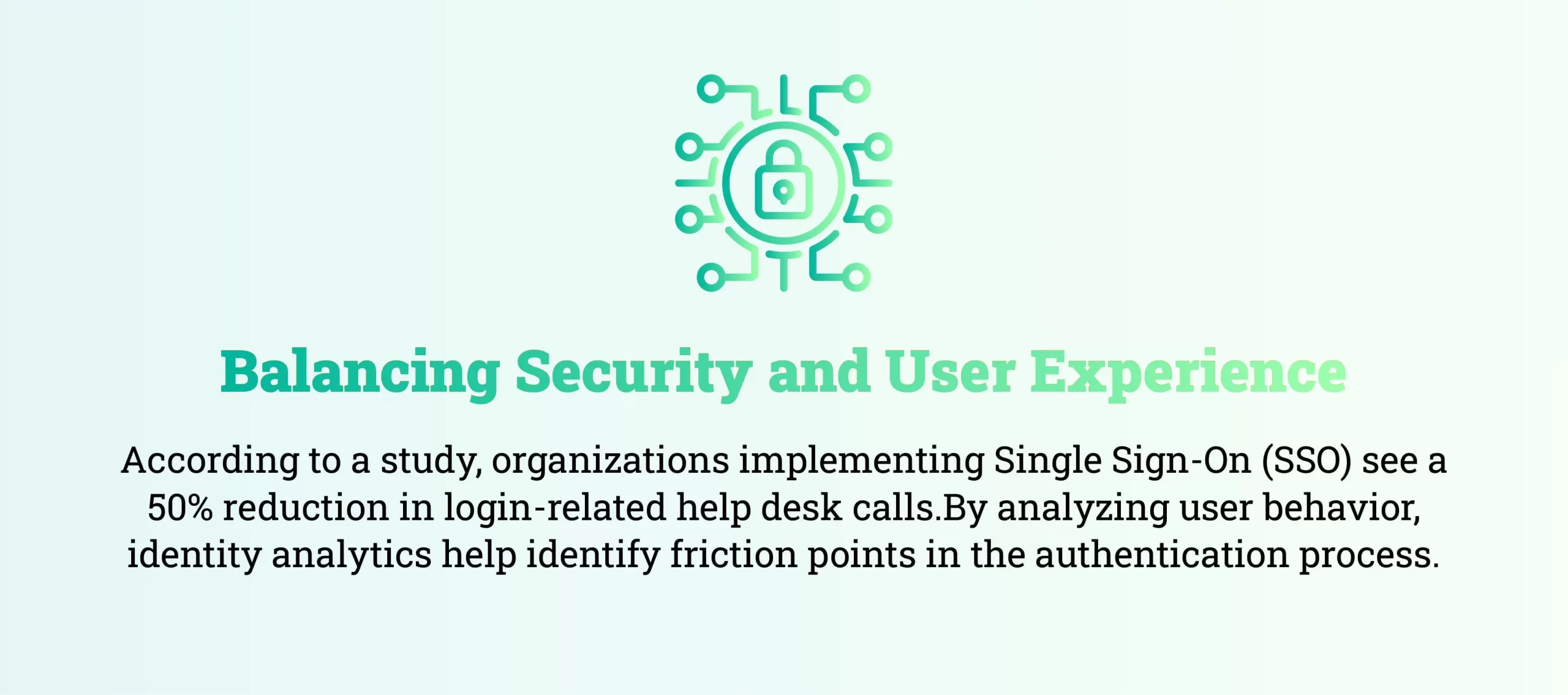Blog
8 IAM Challenges Every Organization Faces and How to Tackle Them Using Identity Data Analytics

8 IAM Challenges Every Organization Faces and How to Tackle Them Using Identity Data Analytics
Robust security measures are more critical than ever in the current digital era. Identity and Access Management (IAM) is at the forefront of these measures, which offers essential tools and protocols to guarantee that only authorized users can access critical systems and data. While IAM is a powerful tool, it comes with its challenges. Let’s look at eight common issues organizations face with IAM and how they can solve them using identity data analytics.
1. Managing User Identities: Organizations deal with various users—employees, contractors, partners, customers—with different access needs. Managing these identities can quickly become overwhelming, especially in large organizations where roles and responsibilities frequently change. Without a transparent system in place, it’s easy for things to slip through the cracks, leading to security risks like orphaned accounts or incorrect access permissions.
According to Gartner, by 2025, 99% of cloud security failures will be the customer’s fault, mainly due to identity management complexities and misconfigurations. By analyzing real-time identity data, organizations gain insights into user behavior, access patterns, and anomalies. This approach helps automatically detect orphaned accounts, ensure appropriate access permissions, and predict role changes based on historical trends. As a result, the risk of security breaches is minimized, and identity management becomes more agile and responsive.
2. Ensuring Secure Access: Ensuring that users have secure access to systems and data is a critical aspect of IAM. The goal is to verify that users are who they say they are and only have access to the information necessary for their role—nothing more. This is where the principle of least privilege comes into play, minimizing the potential damage if an account is compromised.
Advanced analytics continuously monitor access requests and user behavior, identifying unusual patterns or deviations from the norm. This capability allows for the early detection of potential security threats and automatic adjustment of access rights, reinforcing the principle of least privilege and reducing the likelihood of unauthorized access.
3. Staying Compliant with Regulations: Organizations must often adhere to various regulations, such as GDPR, HIPAA, or SOX, which set stringent requirements for managing user identities and access. Failure to comply can result in severe penalties, so IAM practices must align with these regulations.
Identity data analytics help organizations generate detailed reports and audit trails demonstrating adherence to regulatory standards. Automated tools can map IAM processes to specific regulatory requirements, ensuring all actions are compliant. Real-time monitoring and reporting further help quickly identify and address any compliance gaps.
4. Managing Privileged Accounts: Privileged accounts have elevated access to critical systems and data and pose a unique risk. Cybercriminals often target these accounts because they can offer significant control over an organization’s IT environment.
Therefore, managing these accounts carefully is vital to maintaining security. Tracking and analyzing access patterns associated with privileged accounts enables better oversight and control. Analytics can flag abnormal usage, indicating potential misuse or unauthorized access. By correlating identity data with activity logs, organizations can effectively mitigate threats to privileged accounts, ensuring the security of critical systems.
5. Integrating IAM with Existing Systems: Many organizations use various systems and applications, often from different vendors. Integrating a new IAM solution into this diverse IT landscape can be complex and challenging, especially if it isn’t designed to work well with existing systems.

Identity data analytics tools provide a unified view of user identities across different systems, helping to map identity relationships and identify potential conflicts during integration. Organizations can optimize the integration process by leveraging data-driven insights, ensuring that the IAM system functions cohesively within the existing IT environment.
6. Scaling IAM as the Organization Grows: As organizations grow, their IAM needs will naturally evolve. For example, a small business might start with just a few users. Still, as it grows into a larger enterprise, the number of users, devices, and applications it needs to manage will increase significantly.
This growth can strain an IAM system that wasn’t designed to scale. Identity data analytics, which analyzes current trends and usage data, makes forecasting future identity management needs possible. This allows organizations to anticipate the resources required as they grow, ensuring that their IAM infrastructure can handle increased load without compromising security or performance.
7. Balancing Security and User Experience: While security is a top priority, it is vital to ensure that security measures don’t make life difficult for users. If security protocols are too cumbersome, users may try to bypass them, creating additional security risks. Therefore, the challenge is balancing robust security and a smooth user experience.
This understanding allows organizations to fine-tune IAM processes to enhance the user experience without sacrificing security. For instance, adaptive authentication can be implemented, where security is heightened for high-risk actions while routine tasks remain user-friendly.
8. Being Prepared for Security Incidents: No matter how robust an organization’s IAM system is, security incidents can still occur. When they do, the speed and effectiveness of the response are critical to minimizing damage. Identity analytics enable real-time detection and analysis of security breaches, enabling faster containment and mitigation. Post-incident analysis can uncover root causes, inform future security strategies, and ensure the organization is better prepared for potential incidents.
Conclusion
Effective IAM is a critical component of organizational security and operational efficiency. Centralized identity management, secure access controls, regulatory compliance, privileged account management, seamless system integration, scalability, user experience, and incident response are all critical components of a successful IAM strategy. By continuously evaluating and adapting their IAM practices with the power of identity data analytics to meet evolving challenges, organizations can ensure that they are not only safeguarding their digital assets but also providing a user-friendly experience that supports productivity and growth.
ABOUT AUTHOR

Protect your online assets from cyber threats with Paramount

Comprehensive cyber security solutions for individuals and businesses

Significantly reduce the risk of cyber threats and ensure a safer digital environment.






